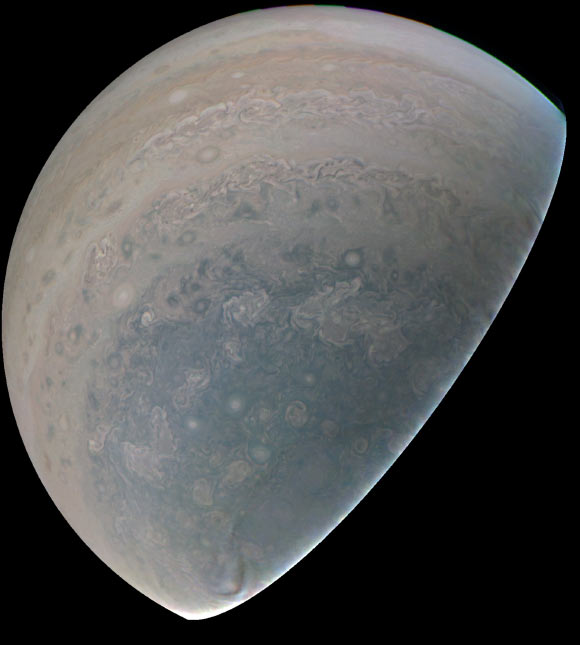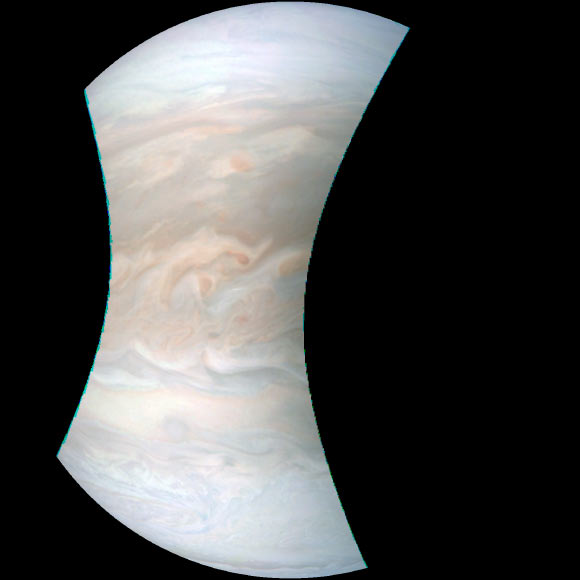NASA’s Juno spacecraft successfully made its eighth flyby of the giant planet Jupiter on September 1, 2017, at 5:49p.m. EDT (2:49p.m. PDT, 21:49 UTC).

This series of enhanced-color images shows Jupiter up close and personal, as Juno performed its eighth flyby of the gas giant. From left to right, the sequence of images taken on September 1 from 6:03p.m. to 6:11p.m. EDT (3:03p.m. to 3:11p.m. PDT). At the times the images were taken, the spacecraft ranged from 7,545 to 14,234 miles (12,143 to 22,908 km) from the tops of the clouds of Jupiter at a latitude range of minus 28.5406 to minus 44.4912 degrees. ‘Points of Interest’ include ‘Dalmatian Zone/Eye of Odin,’ ‘Dark Eye/STB Ghost East End,’ ‘Coolest Place on Jupiter,’ and ‘Renslow/Hurricane Rachel; the final image in the series on the right shows Jupiter’s south pole coming into view. Image credit: NASA / JPL-Caltech / SwRI / MSSS / Gerald Eichstaedt / Sean Doran.
At the time of the closest approach, or perijove (defined as the point in Juno’s orbit when it is closest to the gas giant’s center), Juno was about 2,200 miles (3,500 km) above the planet’s mysterious cloud tops.
All of Juno’s science instruments and the spacecraft’s JunoCam were operating during the flyby to collect data that is now being returned to Earth.

Juno soared over Jupiter’s south polar region when JunoCam acquired this image on September 1. Image credit: NASA / JPL-Caltech / SwRI / MSSS.
Juno launched on August 5, 2011, from Cape Canaveral, Florida, and arrived in orbit around Jupiter on July 4, 2016.
During its mission of exploration, the robotic probe soars low over the planet’s cloud tops — as close as about 2,100 miles (3,400 km).

Points of Interests: ‘Whale’s Tail’ and ‘Dan’s Spot.’ Image credit: NASA / JPL-Caltech / SwRI / MSSS.
During these flybys, Juno is probing beneath the obscuring cloud cover of Jupiter and studying its auroras to learn more about the planet’s origins, structure, atmosphere and magnetosphere.







